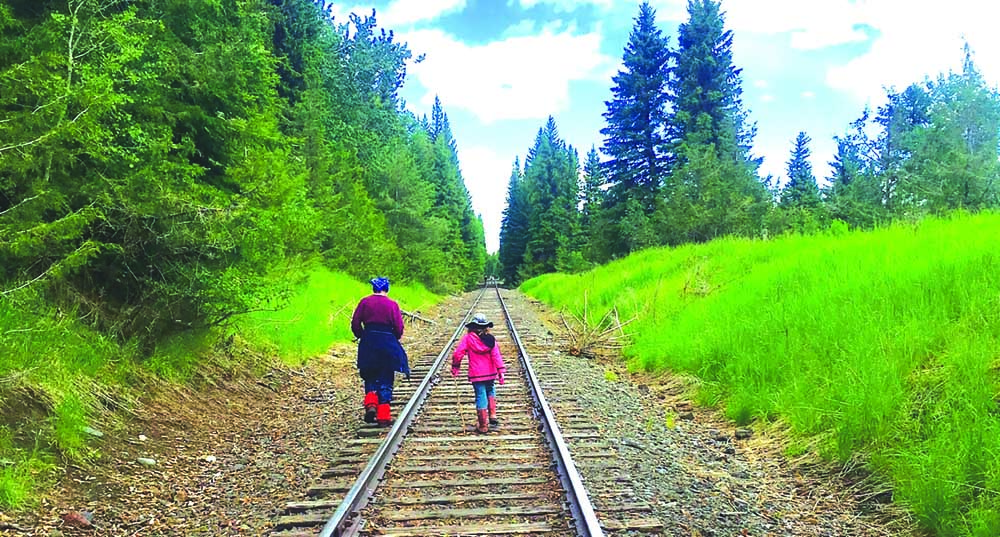This land is our land: Closing Forest Service roads improves recreation opportunities
Published 6:00 am Wednesday, February 8, 2023

- Aney
Our local national forests are a wonderful playground for all sorts of recreation. Hiking, hunting, fishing, mushroom-picking, skiing — it’s a long list of opportunities we have by virtue of living so close to public lands, and it’s easy to forget that there are plenty of people in the world who don’t have this privilege.
Driving for pleasure is another popular use of our public lands. As our vehicles have gotten bigger and more capable, and as the types of motor vehicles have grown to include just about every combination of wheels and motors imaginable, our impact on our beloved Blue Mountains has also grown.
And here is the rub. In trying to be responsible stewards of public resources and dollars, the Forest Service finds a tough puzzle when it comes to motor vehicle travel by the recreating public. It’s a popular activity with all sorts of impacts on natural resources, and the agency doesn’t have the resources to manage the road system properly.
Some startling numbers: Between the three national forests of the Blues, there are about 22,600 miles of roads, with 13,200 miles open for motor vehicle use. Thirteen thousand miles, equivalent to four times the distance across our country from the Pacific to the Atlantic. The average square mile of national forest land outside of wilderness areas has almost 2 miles of road open to motor vehicle travel. That’s a lot of roads to drive.
There are significant impacts to having such a road system. Maintenance is expensive, and the Forest Service only has funding to maintain about 20% of the entire road system. Poorly maintained roads mean more erosion and mud in the streams, rougher and slower travel with more safety risks and greater deferred maintenance costs.
Motor vehicles using these roads also disturb wildlife, spread weeds and create conflicts with other forest users, conflicts that are only getting greater with the increasing popularity and availability of all-terrain vehicles, utility task vehicles, side-by-sides, motorcycles, etc.
To make matters worse, on the Malheur and Wallowa-Whitman national forests, cross-country or off-road travel by motor vehicles is still allowed on most of the general forestland outside of designated wilderness.
No wonder it is sometimes hard to get away from motor vehicles when hunting or hiking in the Blues.
Some motor-vehicle user groups loudly oppose efforts to manage motor vehicle use on public lands. Any attempt to close a road to motor vehicles, or to reduce the amount of off-road travel, is met with claims the Forest Service is trying to lock up and prevent access by the public to their lands. Nothing could be further from the truth.
Actually closing Forest Service lands to the public is a very rare and temporary event, related to extremely high fire danger or other short-term risk to public safety. The public owns these lands, and the agency is not in the business of keeping the owners out. Even when a road is closed to motor vehicles, it is still open for public access — just not with a motor vehicle.
So, here’s a different perspective on the issue: closed roads make fantastic routes for nonmotorized travel. Navigation and route-finding is easy, as the roads are identifiable on paper maps, satellite photos and GPS screens. They tend to have gentle grades and are often used by wildlife as travel routes.
Compared to motor vehicles, bicycle, foot and horseback travel doesn’t wear out or rut road surfaces and is less disturbing to wildlife and other people. There is a demand for this type of recreation, and closed roads are great places to wander.
In fact, use of public roads by people in motor vehicles limits the value of these roads by those on foot, horseback or bicycle. National forest travel management planning is the process that identifies roads to be closed and those to remain open, and this process should give equal weight to nonmotorized forest users.
Closing a road does not close the public out of their national forest. It is in fact improving recreation opportunities for other users while reducing maintenance costs and impacts on natural resources.
And that’s a good thing.









